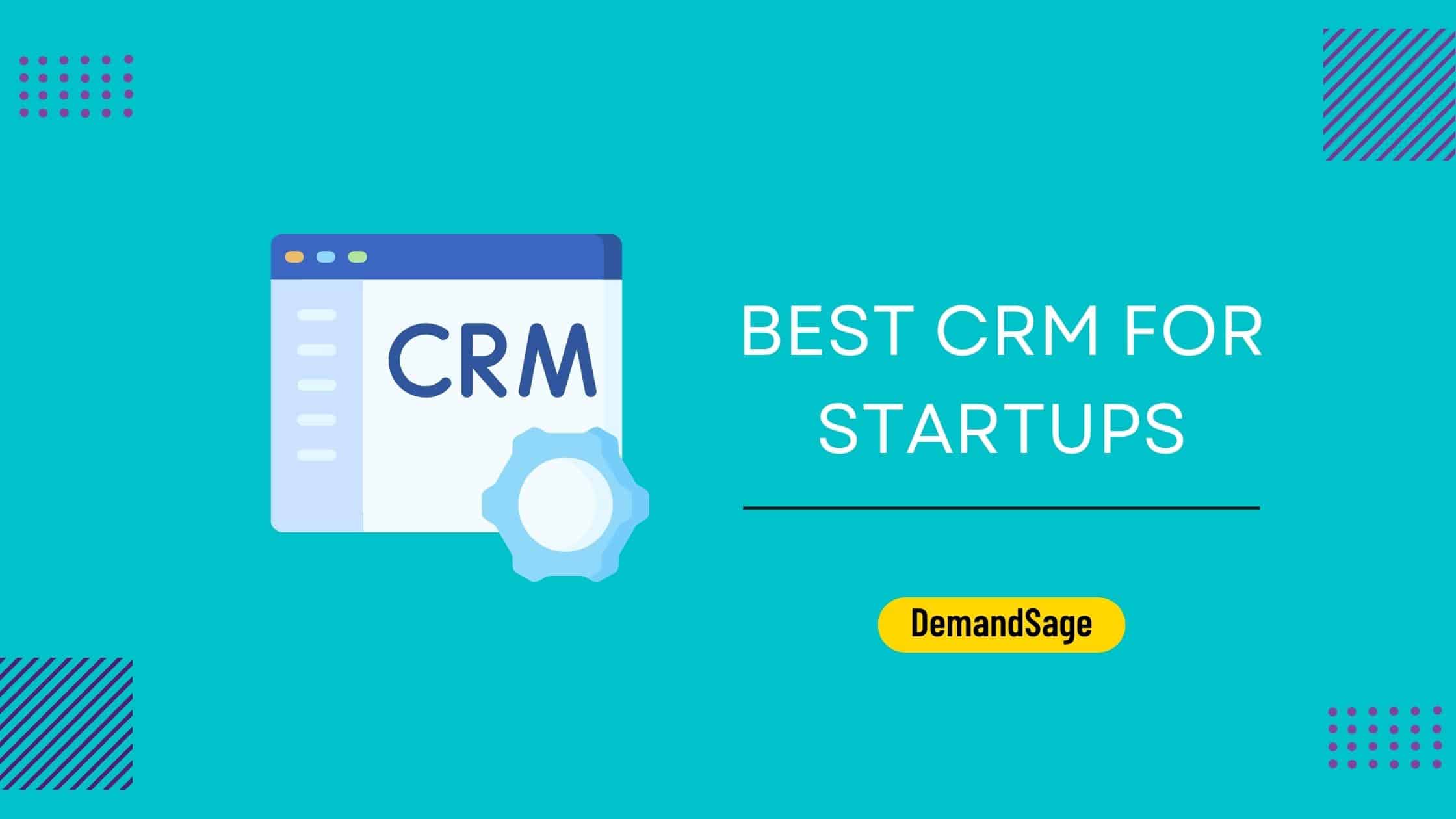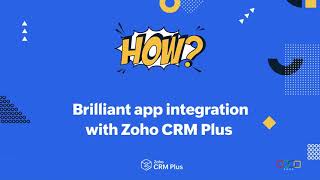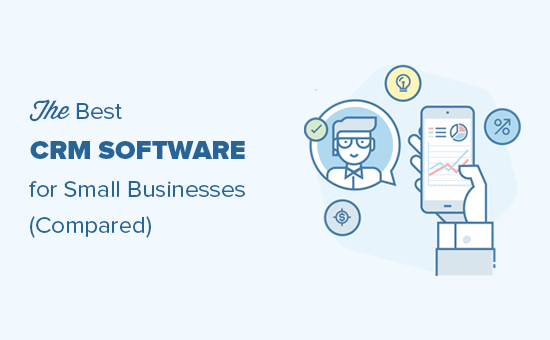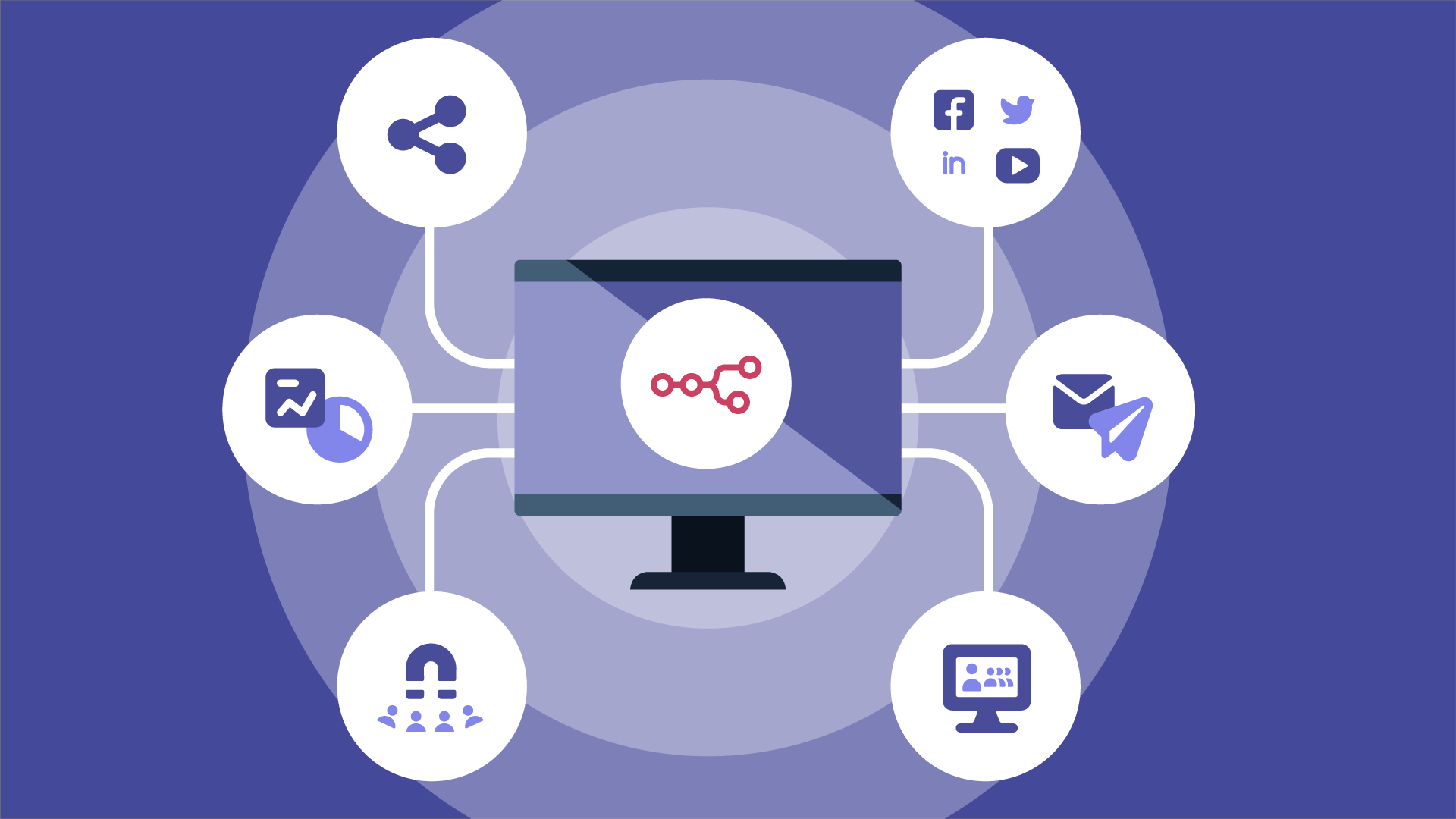Unlock Growth: A Comprehensive Guide to Small Business CRM Setup
Introduction: Why Your Small Business Needs a CRM
In today’s competitive landscape, small businesses face immense pressure to not only attract customers but also cultivate lasting relationships. This is where a Customer Relationship Management (CRM) system becomes an indispensable tool. A CRM is more than just a contact list; it’s a powerful platform that helps you manage interactions with current and potential customers, streamline your sales and marketing efforts, and ultimately, drive business growth. Without a CRM, you might be leaving money on the table, missing opportunities, and struggling to keep up with the demands of a growing customer base.
This comprehensive guide will walk you through everything you need to know about setting up a CRM for your small business. We’ll cover the benefits, the essential features to look for, how to choose the right CRM, and a step-by-step guide to get you up and running. Whether you’re just starting out or looking to upgrade your current system, this guide is designed to provide you with the knowledge and tools you need to succeed.
The Core Benefits of a CRM for Small Businesses
Before diving into the setup process, let’s explore why a CRM is so crucial for small businesses. The advantages are numerous and can significantly impact your bottom line:
- Improved Customer Relationships: A CRM centralizes all customer data, including contact information, purchase history, communication logs, and support tickets. This 360-degree view allows you to personalize your interactions, anticipate customer needs, and provide exceptional service, leading to increased customer loyalty and retention.
- Enhanced Sales Efficiency: CRM systems automate many sales tasks, such as lead generation, follow-up reminders, and pipeline management. This frees up your sales team to focus on closing deals, resulting in higher sales conversion rates and revenue growth.
- Streamlined Marketing Campaigns: A CRM allows you to segment your customer base and target specific groups with personalized marketing campaigns. This increases the effectiveness of your marketing efforts, leading to higher engagement rates and a better return on investment (ROI).
- Data-Driven Decision Making: CRM systems provide valuable insights into customer behavior, sales performance, and marketing effectiveness. By analyzing this data, you can make informed decisions about your business strategies, identify areas for improvement, and optimize your processes.
- Increased Productivity: Automating tasks and centralizing information reduces the time your employees spend on administrative work, allowing them to focus on more strategic initiatives. This leads to increased productivity and overall efficiency.
Investing in a CRM is an investment in your business’s future. It’s a strategic move that can significantly improve your customer relationships, boost sales, and drive sustainable growth.
Essential CRM Features for Small Businesses
Choosing the right CRM involves understanding which features are most important for your specific needs. Here are some essential features that small businesses should prioritize:
- Contact Management: This is the foundation of any CRM. It allows you to store and manage all your customer contacts, including names, addresses, phone numbers, email addresses, and other relevant information.
- Lead Management: This feature helps you track and nurture leads through the sales pipeline. It allows you to capture lead information, qualify leads, and assign them to sales representatives.
- Sales Automation: Automate repetitive sales tasks, such as sending follow-up emails, scheduling appointments, and creating sales reports. This saves time and improves efficiency.
- Marketing Automation: Integrate your CRM with your marketing tools to automate email campaigns, track website visits, and segment your audience for targeted marketing efforts.
- Reporting and Analytics: Gain insights into your sales performance, marketing effectiveness, and customer behavior through comprehensive reports and dashboards. This data allows you to make informed decisions and optimize your strategies.
- Integration Capabilities: Ensure your CRM integrates seamlessly with other tools you use, such as email marketing platforms, accounting software, and social media channels. This allows for a unified view of your customer data.
- Mobile Accessibility: Access your CRM data on the go with a mobile app or a responsive web interface. This allows your team to stay connected and productive, even when they’re away from the office.
- Customization Options: Choose a CRM that allows you to customize fields, workflows, and reports to meet your specific business needs. This ensures the CRM is tailored to your unique processes.
- Security Features: Prioritize a CRM with robust security features to protect your customer data. This includes data encryption, access controls, and regular backups.
By focusing on these essential features, you can ensure you choose a CRM that will effectively support your business goals and drive success.
Choosing the Right CRM for Your Small Business: Key Considerations
Selecting the right CRM is a crucial decision. Here’s a breakdown of key factors to consider to find the perfect fit:
- Your Business Needs: Before you start looking at different CRM options, take the time to define your specific needs and goals. What are your biggest challenges? What do you want to achieve with a CRM? Identify the features that are most important to you.
- Budget: CRM systems come in various price ranges, from free to enterprise-level. Determine your budget and look for options that fit within it. Consider not only the monthly or annual subscription cost but also the cost of implementation, training, and ongoing support.
- Ease of Use: Choose a CRM that is easy to learn and use. The more user-friendly the system, the quicker your team will adopt it and the more value you’ll get out of it. Look for intuitive interfaces and helpful tutorials.
- Scalability: Consider your future growth plans. Choose a CRM that can scale with your business as your needs evolve. Ensure the system can handle an increasing number of users, contacts, and data.
- Integrations: Make sure the CRM integrates with the other tools you use, such as your email marketing platform, accounting software, and social media channels. This will help you create a seamless workflow and avoid data silos.
- Customer Support: Check the vendor’s reputation for customer support. Look for a CRM provider that offers responsive and helpful support, including documentation, online resources, and phone or email support.
- Reviews and Ratings: Read reviews and ratings from other small businesses to get insights into the strengths and weaknesses of different CRM systems. This can help you make a more informed decision.
- Free Trials and Demos: Take advantage of free trials and demos to test out different CRM systems. This allows you to get a feel for the interface, features, and functionality before committing to a subscription.
By carefully considering these factors, you can choose a CRM that aligns with your business needs, budget, and goals. Remember, the right CRM is an investment that can significantly improve your customer relationships, boost sales, and drive sustainable growth.
Step-by-Step Guide to Setting Up Your Small Business CRM
Once you’ve chosen your CRM, it’s time to set it up. Here’s a step-by-step guide to help you get started:
- Choose Your CRM Platform: Based on your research and selection criteria, finalize the CRM platform that best suits your business requirements.
- Sign Up and Create an Account: Register for an account with your chosen CRM provider. Provide the necessary information, such as your company name, contact details, and payment information.
- Define Your Goals: Clearly define your objectives for using the CRM. What do you want to achieve? What are your key performance indicators (KPIs)? This will help you measure the success of your CRM implementation.
- Import Your Data: Import your existing customer data into the CRM. This may include contacts, leads, and sales information. Most CRMs allow you to import data from spreadsheets or other file formats. Ensure your data is clean and organized before importing.
- Customize Your CRM: Customize the CRM to meet your specific business needs. This may include adding custom fields, creating workflows, and configuring reports. Take advantage of the customization options to tailor the system to your unique processes.
- Set Up User Permissions: Assign user roles and permissions to control access to sensitive data and features. This ensures that each team member has the appropriate level of access to the CRM.
- Integrate with Other Tools: Integrate your CRM with other tools you use, such as your email marketing platform, accounting software, and social media channels. This will streamline your workflow and provide a unified view of your customer data.
- Train Your Team: Provide thorough training to your team on how to use the CRM. This includes training on data entry, lead management, sales automation, and reporting. The more training your team receives, the more effectively they will use the CRM.
- Test and Refine: Test the CRM to ensure it’s functioning correctly. Make any necessary adjustments and refine your workflows. Regularly review your CRM setup to ensure it’s meeting your evolving business needs.
- Start Using the CRM: Once you’ve completed the setup and training, start using the CRM. Encourage your team to actively use the system and track your progress.
Following these steps will help you successfully set up and implement your CRM, setting the stage for improved customer relationships, streamlined sales processes, and overall business growth.
Data Migration and Cleaning: Preparing Your Data for CRM
One of the most critical steps in CRM setup is preparing your existing data. Poor data quality can undermine the effectiveness of your CRM, so it’s essential to take the time to clean and organize your data before importing it into the system. Here’s a comprehensive guide to data migration and cleaning:
- Data Audit: Start by conducting a thorough audit of your existing customer data. Identify the data sources, such as spreadsheets, contact lists, and other databases. Assess the quality of your data, including accuracy, completeness, and consistency.
- Data Cleaning: Clean your data by removing duplicates, correcting errors, and standardizing formats. Use data cleaning tools or manual processes to ensure your data is accurate and up-to-date.
- Data Standardization: Standardize your data formats, such as phone numbers, addresses, and email addresses. This will make it easier to search, sort, and analyze your data within the CRM.
- Data Enrichment: Consider enriching your data by adding missing information, such as job titles, company sizes, and social media profiles. This can provide a more complete view of your customers.
- Data Segmentation: Segment your data based on various criteria, such as customer demographics, purchase history, and engagement levels. This will allow you to target specific customer groups with personalized marketing campaigns.
- Data Backup: Before importing your data into the CRM, create a backup of your existing data. This will ensure that you can recover your data if any issues arise during the migration process.
- Data Mapping: Map your existing data fields to the corresponding fields in your CRM. This ensures that your data is imported correctly and that all relevant information is captured.
- Data Import: Import your data into the CRM using the import feature provided by the platform. Follow the instructions and guidelines provided by the CRM provider.
- Data Verification: After importing your data, verify that all data has been imported correctly. Check for any errors or inconsistencies and make any necessary corrections.
- Ongoing Data Management: Implement ongoing data management practices to maintain the quality of your data. This includes regularly reviewing your data, updating information, and removing outdated or inaccurate records.
By following these steps, you can ensure that your data is clean, organized, and ready to be used within your CRM. This will enable you to make the most of your CRM and achieve your business goals.
Training and Onboarding Your Team: Maximizing CRM Adoption
The success of your CRM implementation hinges on user adoption. Properly training your team is crucial to ensure they understand how to use the system effectively and are motivated to do so. Here’s a step-by-step guide to training and onboarding your team:
- Identify Training Needs: Assess your team’s existing knowledge and skills related to CRM. Identify any gaps or areas where additional training is needed.
- Develop a Training Plan: Create a comprehensive training plan that outlines the training objectives, content, schedule, and methods. Tailor the plan to the specific needs of your team.
- Choose Training Methods: Use a variety of training methods to keep your team engaged and motivated. These may include:
- Online tutorials and videos: Provide online tutorials and videos that demonstrate how to use the CRM features.
- Live training sessions: Conduct live training sessions where your team can ask questions and interact with the trainer.
- Hands-on exercises: Provide hands-on exercises and simulations to help your team practice using the CRM.
- Documentation: Create comprehensive documentation, such as user manuals and FAQs, to help your team learn and use the CRM.
- Provide Role-Based Training: Tailor your training to the specific roles and responsibilities of each team member. This will ensure that each team member receives the training they need to perform their job effectively.
- Train the Trainers: Identify key team members who can serve as CRM champions and train them to train others. This will help ensure that your team has ongoing support and training.
- Schedule Training Sessions: Schedule training sessions at convenient times and locations. Consider offering multiple training sessions to accommodate different schedules.
- Track Training Progress: Track your team’s training progress to ensure they are completing the training and understanding the material.
- Provide Ongoing Support: Provide ongoing support to your team after the initial training. This may include:
- Help desk: Establish a help desk or support system where team members can ask questions and get assistance.
- Regular check-ins: Conduct regular check-ins with your team to answer questions and provide feedback.
- User groups: Create user groups or forums where team members can share tips and best practices.
- Measure Adoption and Usage: Track your team’s CRM usage and adoption rates. This will help you identify any issues or challenges and make adjustments to your training and support efforts.
- Gather Feedback: Gather feedback from your team on their training experience and the usability of the CRM. Use this feedback to improve your training and support efforts.
By implementing a well-designed training and onboarding program, you can maximize CRM adoption and ensure that your team is equipped to use the system effectively.
Advanced CRM Strategies for Small Businesses
Once you’ve mastered the basics of CRM setup, you can explore advanced strategies to further enhance your customer relationships and drive business growth. Here are some advanced tactics to consider:
- Customer Segmentation: Go beyond basic segmentation and create highly targeted customer segments based on demographics, purchase history, engagement levels, and other relevant criteria. This allows you to tailor your marketing messages and offers to specific customer groups.
- Lead Scoring: Implement lead scoring to prioritize leads based on their likelihood to convert. Assign scores to leads based on their behavior, demographics, and engagement levels. This will help you focus your sales efforts on the most promising leads.
- Workflow Automation: Automate complex workflows, such as sales processes, customer onboarding, and support ticket management. This will improve efficiency, reduce errors, and free up your team to focus on more strategic initiatives.
- Personalized Marketing: Use your CRM data to personalize your marketing messages and offers. This includes personalizing email subject lines, website content, and product recommendations.
- Social Media Integration: Integrate your CRM with your social media channels to track social media interactions, monitor brand mentions, and engage with your customers in real-time.
- Customer Journey Mapping: Map the customer journey to understand how customers interact with your business at each stage of the sales cycle. This will help you identify areas for improvement and optimize the customer experience.
- Predictive Analytics: Use predictive analytics to forecast customer behavior, identify potential churn risks, and personalize your marketing efforts.
- Integration with Other Tools: Integrate your CRM with other tools you use, such as email marketing platforms, accounting software, and project management tools. This will streamline your workflow and provide a unified view of your customer data.
- Continuous Improvement: Continuously monitor your CRM performance and make adjustments to your strategies as needed. Regularly review your data, analyze your results, and identify areas for improvement.
By implementing these advanced CRM strategies, you can take your customer relationships to the next level and drive significant business growth.
Troubleshooting Common CRM Setup Issues
Even with careful planning, you may encounter some common issues during your CRM setup. Here’s how to troubleshoot them:
- Data Import Errors: If you experience data import errors, double-check the data format, data mapping, and import settings. Ensure that your data is clean and organized before importing.
- Integration Problems: If you encounter integration problems, verify the integration settings, API keys, and authentication credentials. Consult the documentation of the integrated tools for troubleshooting tips.
- User Adoption Issues: If your team is not adopting the CRM, provide additional training, offer ongoing support, and highlight the benefits of using the system. Address any resistance or concerns that your team may have.
- Performance Issues: If you experience performance issues, optimize your CRM configuration, clean up your data, and upgrade your hardware if necessary. Contact your CRM provider for assistance.
- Reporting Inaccuracies: If your reports are inaccurate, verify the data sources, report settings, and calculations. Review your data to identify any errors or inconsistencies.
- Security Concerns: If you have security concerns, review your security settings, implement access controls, and regularly back up your data. Contact your CRM provider for security best practices.
- Customization Problems: If you encounter customization problems, review your customization settings, consult the documentation, and contact your CRM provider for assistance.
By addressing these common issues, you can ensure a smooth CRM setup and maximize the value of your investment.
Conclusion: Maximizing the Value of Your CRM
Setting up a CRM for your small business is a significant step towards improved customer relationships, streamlined sales processes, and overall business growth. By following the steps outlined in this guide, you can successfully implement a CRM that meets your specific needs and helps you achieve your business goals. Remember that CRM implementation is an ongoing process. Continuously monitor your CRM performance, refine your strategies, and adapt to the evolving needs of your business. By investing in a CRM and leveraging its capabilities, you can unlock the potential for sustainable growth and build lasting customer relationships.
Don’t be afraid to experiment, learn from your mistakes, and seek help when needed. The right CRM, used effectively, can be a game-changer for your small business. By prioritizing your customers, streamlining your processes, and leveraging the power of data, you can build a successful and thriving business.





